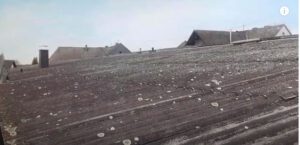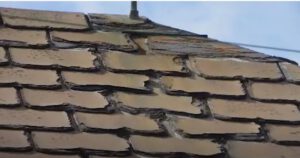 Asbestos was a commonly used material in Australian homes until the 1980s. It was used in roofing, insulation, flooring, and many other building materials. Asbestos can be extremely dangerous to human health, causing diseases such as lung cancer and mesothelioma. Therefore, it is important to know the signs that your Australian roof may have asbestos.
Asbestos was a commonly used material in Australian homes until the 1980s. It was used in roofing, insulation, flooring, and many other building materials. Asbestos can be extremely dangerous to human health, causing diseases such as lung cancer and mesothelioma. Therefore, it is important to know the signs that your Australian roof may have asbestos.
What is asbestos?
Asbestos is a naturally occurring mineral that was widely used in construction materials until the 1980s. It was used for its strong and heat-resistant properties, making it a popular choice for roofing, insulation, and flooring.
The danger of asbestos lies in its fibers, which can become airborne when disturbed. When these fibers are breathed in, they can become embedded in the lungs, leading to serious health problems such as lung cancer, mesothelioma, and asbestosis.
Why Should You Test for Asbestos in Your Roof?
The health risks associated with asbestos make it important to know if your home has any trace of the substance. Testing for asbestos can be done by a certified asbestos specialist or a qualified roofer.
Testing is especially important if your Australian roof was installed before 1985, when the use of asbestos in building materials was prohibited.
If your roof contains asbestos, it is not necessarily a cause for alarm; many roofs remain in good condition and do not need to be replaced or removed. However, if the asphalt shingles are cracked or deteriorating, they should be replaced as soon as possible in order to avoid potential health risks associated with exposure.
Signs that your Australian roof may contain asbestos
If your home was built before the 1980s, there is a chance that your roof may contain asbestos. Here are some of the signs that your Australian roof may have asbestos:
- Age of the building: If your building was constructed before the 1980s, it is more likely that it contains asbestos. Asbestos was widely used in construction materials until this time, so older buildings are more likely to have asbestos-containing materials.
- Type of roofing material: Asbestos was commonly used in roofing materials such as corrugated cement sheets, flat sheeting, and shingles. If your roof is made from any of these materials, it may contain asbestos.
- Appearance of the roofing material: Asbestos-containing roofing materials often have a distinctive appearance. They may be gray or brown in color and have a corrugated or flat surface. The edges of the roofing sheets may also be slightly curved.
- Condition of the roofing material: Asbestos-containing roofing materials can become brittle and break down over time. If your roof has visible cracks or signs of wear and tear, it may contain asbestos.
What to do if you suspect your roof contains asbestos
If you suspect that your Australian roof contains asbestos, it is important to take action as soon as possible. Here are the steps you should take:
- Do not disturb the roofing material: Asbestos fibers can become airborne when the material is disturbed. Therefore, it is important to avoid any activity that may disturb the roofing material, such as walking on the roof or drilling into it.
- Seek professional help: Contact a qualified asbestos removal specialist to carry out an inspection of your roof. They will be able to confirm whether or not the roofing material contains asbestos.
- Arrange for removal: If the roofing material does contain asbestos, it will need to be removed by a licensed asbestos removal specialist. This is a dangerous and complex process that should only be carried out by a professional.
- Take precautions: If you are living in a building with asbestos-containing roofing material, take precautions to minimize your exposure to asbestos fibers. This may include avoiding the attic or using protective gear when entering the area.
Conclusion
 In conclusion, if you suspect that your Australian roof may contain asbestos, it is important to take action as soon as possible. Signs that your roof may contain asbestos include the age of the building, type and appearance of the roofing material, and the condition of the material.
In conclusion, if you suspect that your Australian roof may contain asbestos, it is important to take action as soon as possible. Signs that your roof may contain asbestos include the age of the building, type and appearance of the roofing material, and the condition of the material.
If you suspect that your roof contains asbestos, seek professional help from an asbestos removal specialist. They will be able to confirm whether or not the roofing material contains asbestos and arrange for its safe removal.
Remember to take precautions to minimize your exposure to asbestos fibers until the roofing material has been removed. By taking these steps, you can help to protect yourself and your family from the dangers of asbestos.